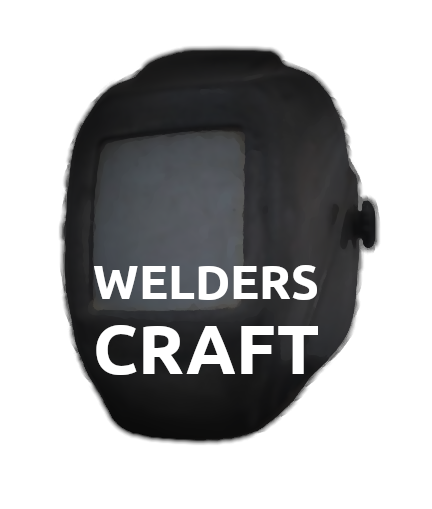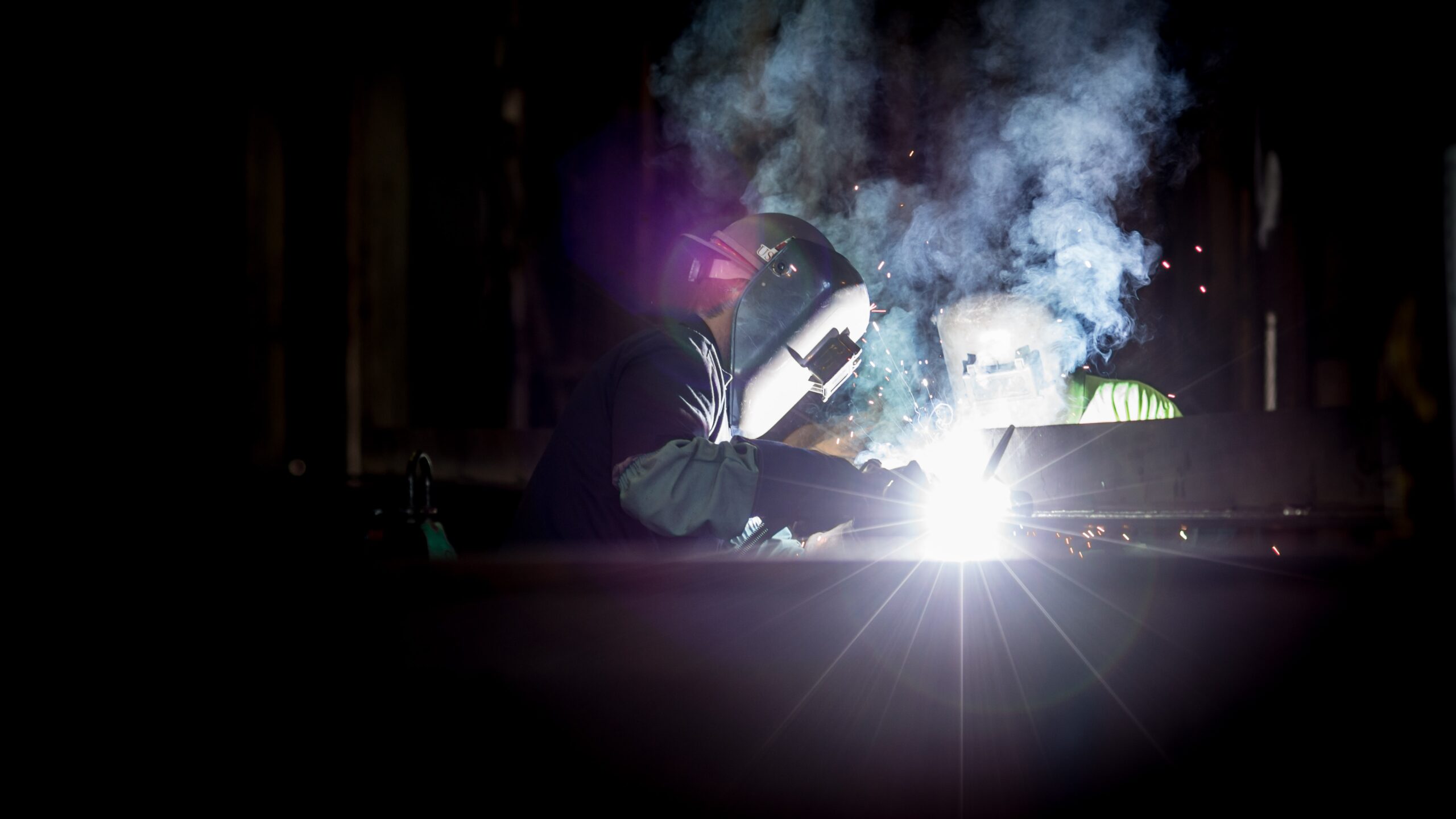Is welding hard on the body?
Welding can be hard on the body, but with proper protective gear, safe working practices, and workstations that are set up properly, you can significantly lower the risks that welding poses to your body.
Aches and pains are a part of life, but doing everything you can to take care of your body will help you avoid discomfort and damage. Bad habits can lead to your body breaking down more quickly than it should and will add to your aches and pains.
Practicing good habits in your welding career, and being vigilant will help protect your body from the dangers that present themselves in the welding and fabrication industry. This will make your day, your career, and your life more enjoyable.
Read my tips below on how to protect yourself in the welding industry and make sure that you go home safe, and with fewer aches and pains.
Set up Your Workstation to Protect your Body
Workstation setup is key in keeping your body in shape. Optimizing your workstation setup will encourage good habits that are better for your body in the long run.
If your employer isn’t looking out for you and providing you with a well-set-up work area, then you will need to take the initiative and look out for yourself.
Get your Work off of the Ground
Whenever possible, get your work off of the floor and onto a worktable or positioner that is adjusted for your height. This will keep you from spending too much time bent over or on your knees.
Getting your work into a place that is more comfortable to reach will be easier on your body and will help you retain more of your energy throughout the day. Increased efficiency is an added benefit when your work is properly positioned.
Use Weld Curtains or Screens
Using weld curtains will help protect people passing by from your bright weld arc, and will provide a shield from sparks and grinding debris. Weld curtains can also be set up to protect you from someone else working nearby.
Keep your Tools Nearby
All of the tools needed for your project should be nearby. This will keep you from making trips between your tools and your work. Less walking around means fewer opportunities for tripping and falling.
Keeping your tools on a rolling cart is very useful if you’re workstation frequently moves around the shop.
Any tools not needed should be cleared out of your work area so as not to create additional trip hazards. Taking time at the end of each day to pick up your tools will be helpful.
Wear the Proper Personal Protective Equipment
The importance of wearing the proper protective equipment when welding and fabricating cannot be over-emphasized.
Below, I have made a brief list of a few of the hazards that welding poses to your body.
- Bright light from the welding arc
- High heat
- Loud sounds
- Heavy objects
- Fumes and dust
Wear Eye Protection
In my experience, eye injuries are one of the highest reported injuries in the welding industry. Most eye injuries can be prevented and reduced by wearing the proper eye protection.
Wearing safety glasses or goggles will help to guard your eyes against sparks and flying debris. Eye protection should be worn at all times when in the vicinity of any welding and fabrication work.
Wear your Welding Hood
This may seem obvious but I’ve worked with plenty of guys that will take shortcuts and do a quick weld without their welding hood. Not only is this a safety hazard, but this can create quality issues as well.
Your welding hood will protect your eyes from the damage that can be caused by the welding arc. Welding hoods protect your face from burns that can be caused by the welding arc and provide a barrier between sparks and other debris.
How to Protect Your Feet, Hands, and Body When Welding
Wear the proper welding gloves to help protect your hands from burns. There are different styles of welding gloves designed for the various types of welding. Be sure to choose the gloves that will be best suited for your work.
Wear weld sleeves or a welding coat to provide a barrier of protection for your arms and upper body. Welding coats come in a variety of styles and can be made from materials such as leather or fire-resistant fabric.
Wear sturdy pants to protect your legs. Pants should be made from fire-resistant material.
Wear the proper footwear to keep sparks and hot slag off of your feet. Steel-toed boots are a good idea and likely required by your employer to help protect your toes from heavy objects.
Avoid wearing any synthetic materials that can melt and cause burns.
Keep your distance from hot objects. Avoid leaning on hot welds, and position yourself so that you are not getting a shower in sparks. Clothing does not make you invincible. Use caution when welding and working with hazardous processes and objects.
Always Wear Earplugs
I have worked with some guys who don’t always wear earplugs when they are welding. Perhaps you have too.
While it might seem like no big deal if you are welding on something and it isn’t loud, there are additional risks to your hearing when welding other than loud noises.
When I went to welding trade school my instructor shared his story that I have not forgotten. He learned from his own experience why wearing earplugs is so important. My instructor had lost hearing in one of his ears after a piece of hot slag made its way into his ear canal. He immediately lost hearing in that ear.
Having heard his story a few times, I always take the time to wear earplugs when welding.
Wear your Face Shield When Grinding
It may be tempting not to wear a face shield when you need to grind something real quick, but the few seconds that you save are not worth the risk.
I worked with a guy once that needed to use the grinder. He chose to save a few seconds and skip wearing his face shield. While grinding, his grinding wheel broke apart sending chunks of grinder wheel into his face. Needless to say, he spent the afternoon in urgent care. Time was lost and needless pain was felt just to save a few seconds.
Conversely, another guy I worked with was wearing his face shield when he was back-gouging a weld with his grinder. The grinder lurched toward him smashing into his face shield. The grinder left a hefty scar on the face shield, but thankfully his face was unscathed and he was unhurt.
Don’t forget to keep your safety glasses on at all times. Even if you have a face shield on, sparks and other grinding debris can make it around the face shield and into your eyes.
Use a Mask and Ventilate your Work Area
Welding produces fumes that can be harmful to breathe and grinding can create excess dust. Wearing a mask and or ventilating your work area will greatly reduce the fumes and dust and keep your lungs and body protected.
Some premium welding hoods will push fresh filtered air into the hood, allowing you to breathe clean air. This feature provides another added benefit of keeping you cooler while you weld.
Practice Safe Working Habits
Habits are very important when it comes to hazardous work environments. Bad habits will put you in dangerous scenarios. Good habits will naturally help you to have a safer working environment and will encourage you to make the right decisions quickly when necessary.
Use Equipment to Lift Heavy Objects
Don’t try to be a hero. Lifting heavy objects with your body can cause aches, pains, and injuries.
Most shops and work areas will have equipment like overhead cranes and forklifts to lift heavy objects. Use these to your advantage. They will save your back from unnecessary wear, and pain.
Watch out for Pinch Points
Pinch points are everywhere! Keep your fingers and limbs safe by being aware of any pinch points.
Pinch points are created by any two objects that come together with great force or power.
Be sure you know where the pinch points are on a particular machine before you begin to use it. Respect safety guards and safety zones. Don’t take shortcuts!
Pinch points can also be created in places you may not expect. For example, moving heavy objects can create a pinch point when you go to set them down. Keep your hands and body out of underneath objects at all times while they are suspended.
You can do it!
The welding environment poses hazards that can be hard on the body, but if you wear the appropriate safety gear, set your workstation up properly, and practice safe working habits, you can significantly reduce the risks of the industry and go home feeling good.
This is not an exhaustive list of the dangers in the welding and fabrication industry. Always be aware of the hazards that surround you.
Go out of your way to make sure that you are doing what you can to protect your body. Some effects of the hazards in the welding industry may not be immediately noticeable. Take the time now to build good habits that will keep you safer and healthier in the long run.
Thank you so much for taking the time to read my post! You can learn more about me here.
Please leave a comment if you have additional tips and tricks to share or if you found my writing helpful!

